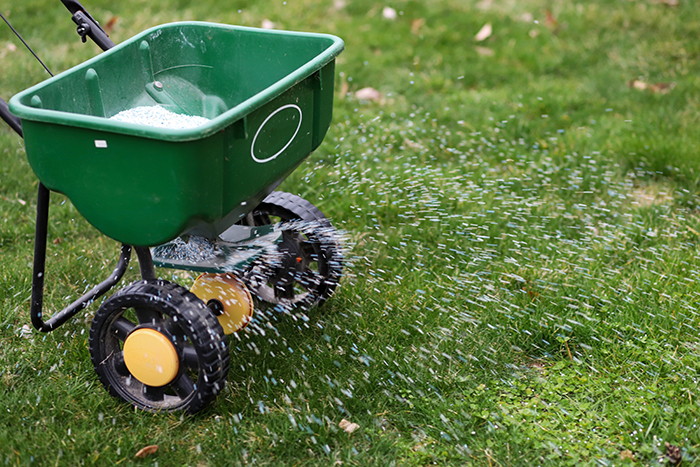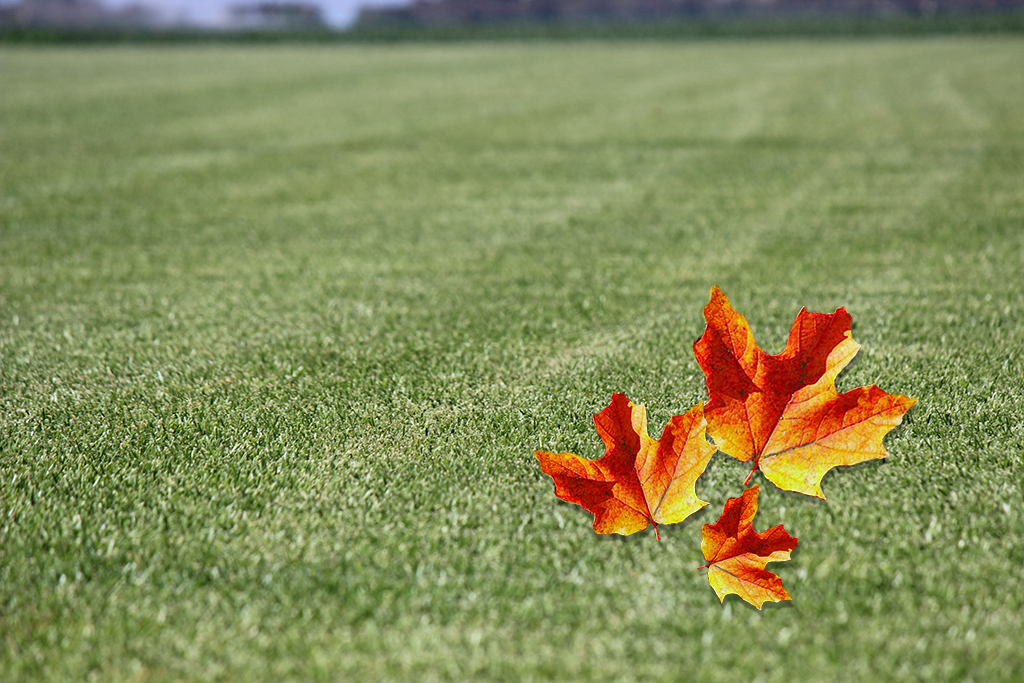Prepare Your Southern Lawn for Winter

Here in the South, the Spring and Summer seasons provide an ideal growing environment for lawn grasses such as St. Augustine, Centipede, Bermuda, and Zoysia. These commonly used grasses are often referred to as “warm-season grasses”, or “southern grasses” due to their natural ability to flourish in areas that experience hot summers. With adequate water, a scorching, long Summer is of no issue to these “warm-season” grasses, as they grow best when temperatures are over 75° F.
Because “southern grasses” thrive so well in hot environments, naturally, they lack the low temperature hardiness that is common of the “cool-season grasses” such as Kentucky Bluegrass, Fescues, and Ryegrasses. When temperatures drop, in an effort to conserve water and nutrients, “southern grasses” will focus their resources on their roots and growth will slow tremendously. They will enter a natural state of protection against cold temperatures called “Dormancy”. Dormancy is evidenced by grasses losing their lush green leaf and adopting a brownish-tan color, which is then maintained throughout the Winter. This state of protection is nothing to worry about. It is essentially taking a long Winter’s nap, and when the temperatures start to warm up during the Spring, your grass will begin waking up (“greening-up”) and replace its brown “Winter’s coat” with its natural green color.
WHAT TO DO DURING DORMANCY
Because dormancy is a time of stalled growth and conservation, a grass’ water needs and mowing requirements are drastically reduced.
Many people do not like the look of the brown color caused by dormancy. To keep an attractive green yard throughout the Winter, homeowners may choose to overseed their lawn with a cool-season grass, such as Ryegrass. Annual ryegrass is a popular choice among homeowners due to its rapid seed germination, growth, and ability to thrive in sun or shaded areas. Ryegrass provides an attractive green cover over your permanent lawn grass throughout the Winter and dies off as the temperatures start to rise in the Spring- just in time for your permanent lawn to start greening up. Lawns that have been overseeded with ryegrass will require watering, fertilizing, mowing, and pest control throughout the Winter, as it is its growing season.

STRESS CAUSED BY LOW TEMPERATURES
When temperatures drop below 20°F, “warm season grasses” become susceptible to low temperature injury. Areas with poor drainage, excessive thatch, reduced sun exposure and high traffic tend to have more intense injury after a severe freezing event. There are several management practices a homeowner can utilize to minimize injury caused by low temperatures.
• During cooler seasons, increase mowing height. Taller grass promotes deeper root growth. The deeper the root, the stronger the grass’ ability will be to withstand severely cold temperatures.
• Avoid late-Fall applications of fertilizer. Fertilizer promotes new leaf shoots which are tender and have less tolerance for stress due to low temperatures.
• Avoid too much lawn traffic during dormancy and especially after a freezing event. Walking on frozen grass will only further damage turf already injured from a cold temperature event.
• Ensure areas remain well-drained as areas of poor drainage tend to hold water and remain colder for longer periods of time during freeze events.
As we head into the cooler time of the year, it is important to remember that the look of your lawn caused by the cool temperatures of late Fall and Winter is only temporary. Before we know it, the Spring will be upon us, and the dull brown colors of your lawn will quickly fade away and become the lush green hues of new growth!
For questions regarding how you can better prepare your lawn for Winter, please contact us at the following:
Vero Beach, Florida Farm: Gulf Kist Sod of Pensacola:
PHONE: 772-978-0045 PHONE: 850-858-TURF(8873)
EMAIL: vero@gulfkistsod.com EMAIL: pensacola@gulfkistsod.com
Source of Information in creating this blog post:
Trenholm, Laurie E., and J. Bryan Unruh, editors. THE Florida Lawn Handbook: Best Management Practices for Your Home Lawn in Florida. 3rd ed., University Press of Florida, 2005.
Leave A Reply:
You must be logged in to post a comment.



